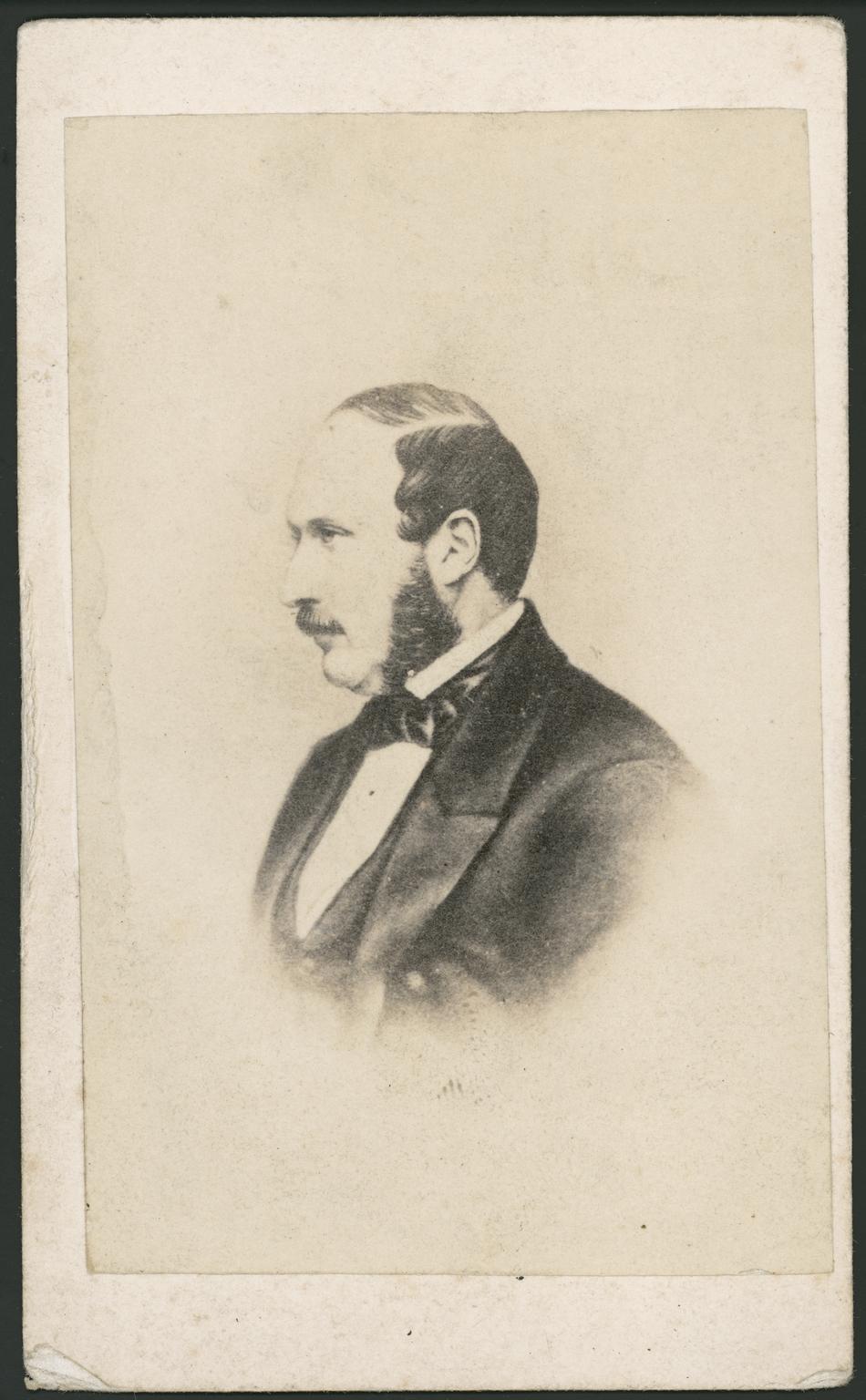The background
With few exceptions, most professional portrait photographers of the 1850s took either Daguerreotypes or, after 1854, ambrotypes. With both processes, each picture was unique and multiple copies could only be made with difficulty—if at all.
People wanting larger portraits, or more than one copy, could have whole plate prints made from wet collodion negatives, but there was little demand for these—except in the most fashionable studios—because they were expensive. They cost £2–4, depending on the size and whether the image had been hand-coloured or not.
The development of the carte de visite
Realising that a market existed for a process which could produce a large number of prints very cheaply, the Parisian photographer André-Adolphe-Eugène Disdéri devised a way of reducing costs by taking several portraits on one photographic plate.
This required the use of a special camera; many different types were developed. Some had several lenses, which could be uncovered either individually or all at the same time, to give (usually) 4 or 8 photographs on the same plate. Others had a mechanism for moving the photographic plate so that each image was recorded on a different area.
Because several exposures were made on each plate, a number of positive prints could be made at the same time. The negative could be reprinted many times to produce the number of copies required by the sitter. The resulting photographs were mounted onto card. They were called ‘cartes de visite’ because they were about the size of a visiting card.
![Emperor Napoleon III and the Empress Eugenie, carte-de-visite, by Disderi & Cie, Paris, n.d. [c1865?] © Science Museum Group collection](https://blog.scienceandmediamuseum.org.uk/wp-content/uploads/2011/01/large_2001_0578.jpg)
The carte de visite in the UK
The carte de visite was introduced to England in 1857. In May 1860, John J.E. Mayall took carte portraits of Queen Victoria, Prince Albert and their children. These were published later that year—and the popularity of carte portraits soared.

People began to collect portraits of their family, friends and celebrities, mounting them in photograph albums. Celebrity cartes were sold at stationer’s shops in the same way that picture postcards are today. They costfrom 1/- (5p) to 1/6d (7.5p), depending on the fame and popularity of the sitter.
A Victorian phenomenon
Each decade of the carte, and later the larger version called a cabinet card, had its own characteristic studio accessories:
- 1860s: balustrade, column and curtain
- 1870s: rustic bridge and stile
- 1880s: hammock, swing and railway carriage
- 1890s: palm trees, cockatoos (usually stuffed specimens) and bicycles
- 1900s: the motor car

When the carte de visite lost its novelty, the larger cabinet portrait was introduced (c. 1866). Produced by the same method as the carte, its larger size showed greater detail in the features of the sitter. It remained popular until c.1914.
You can see examples of cartes de visite and learn more about them in our Kodak Gallery.
This interesting article suggests that Carte de Visites were usually created using a multiple lens camera making several images on one plate.
In which collections can one see those multiple image plates? Single image plates seem to be easily found.